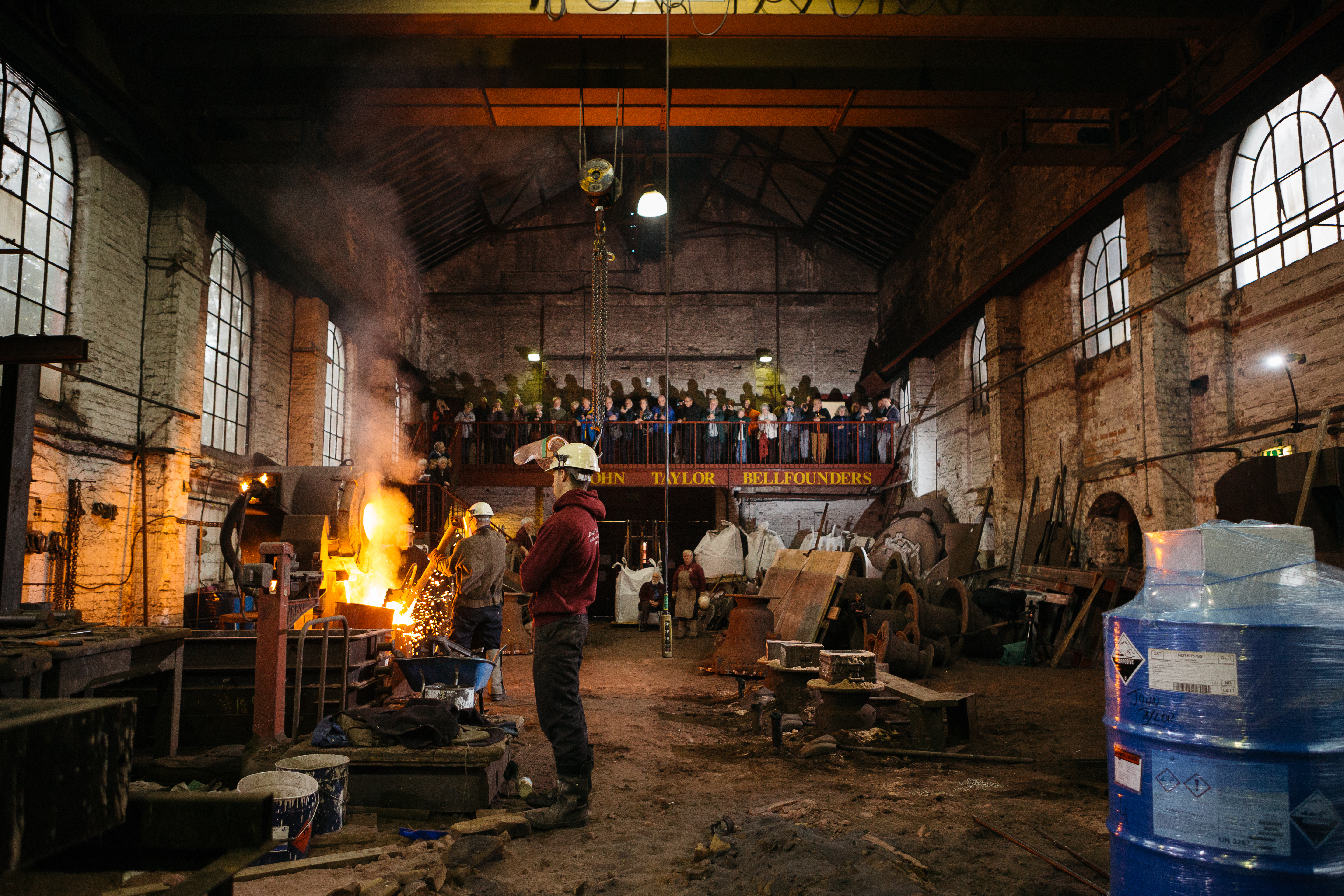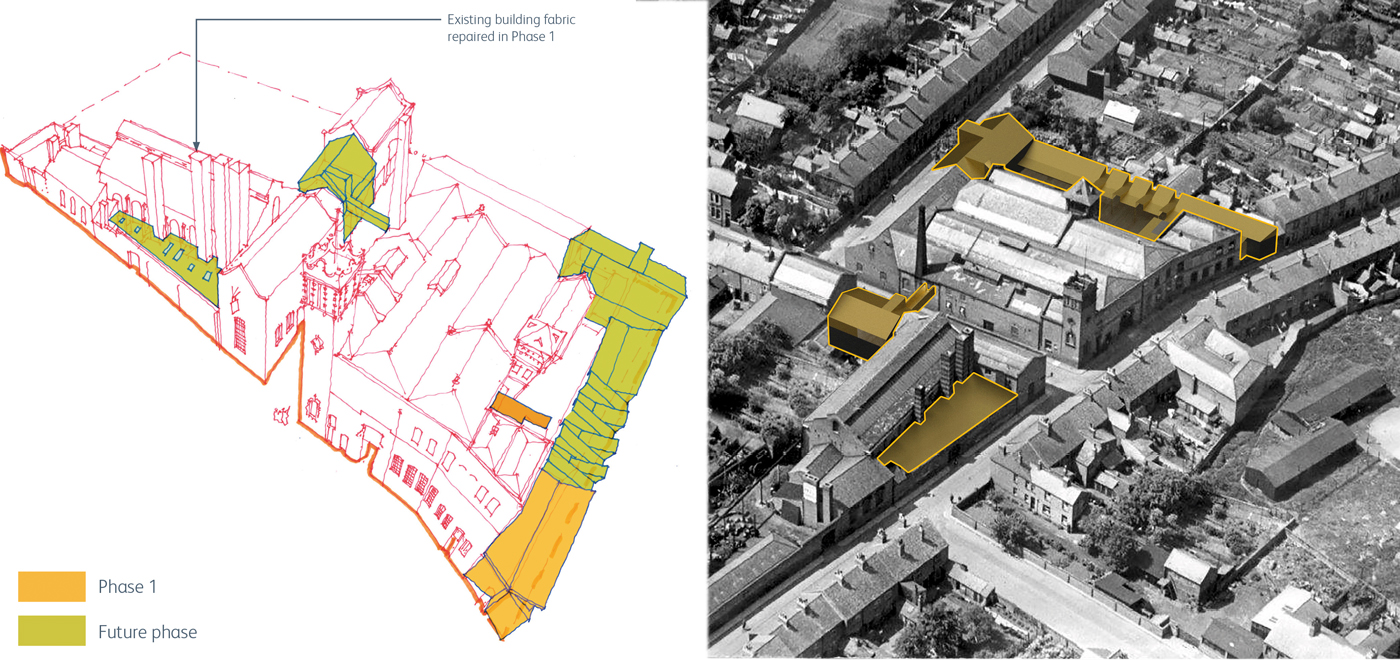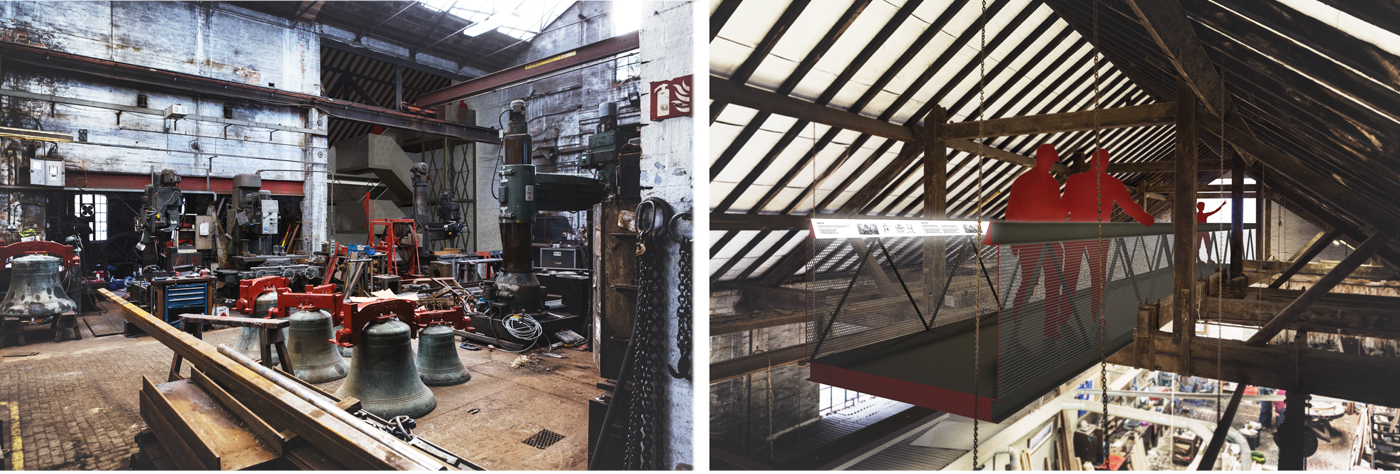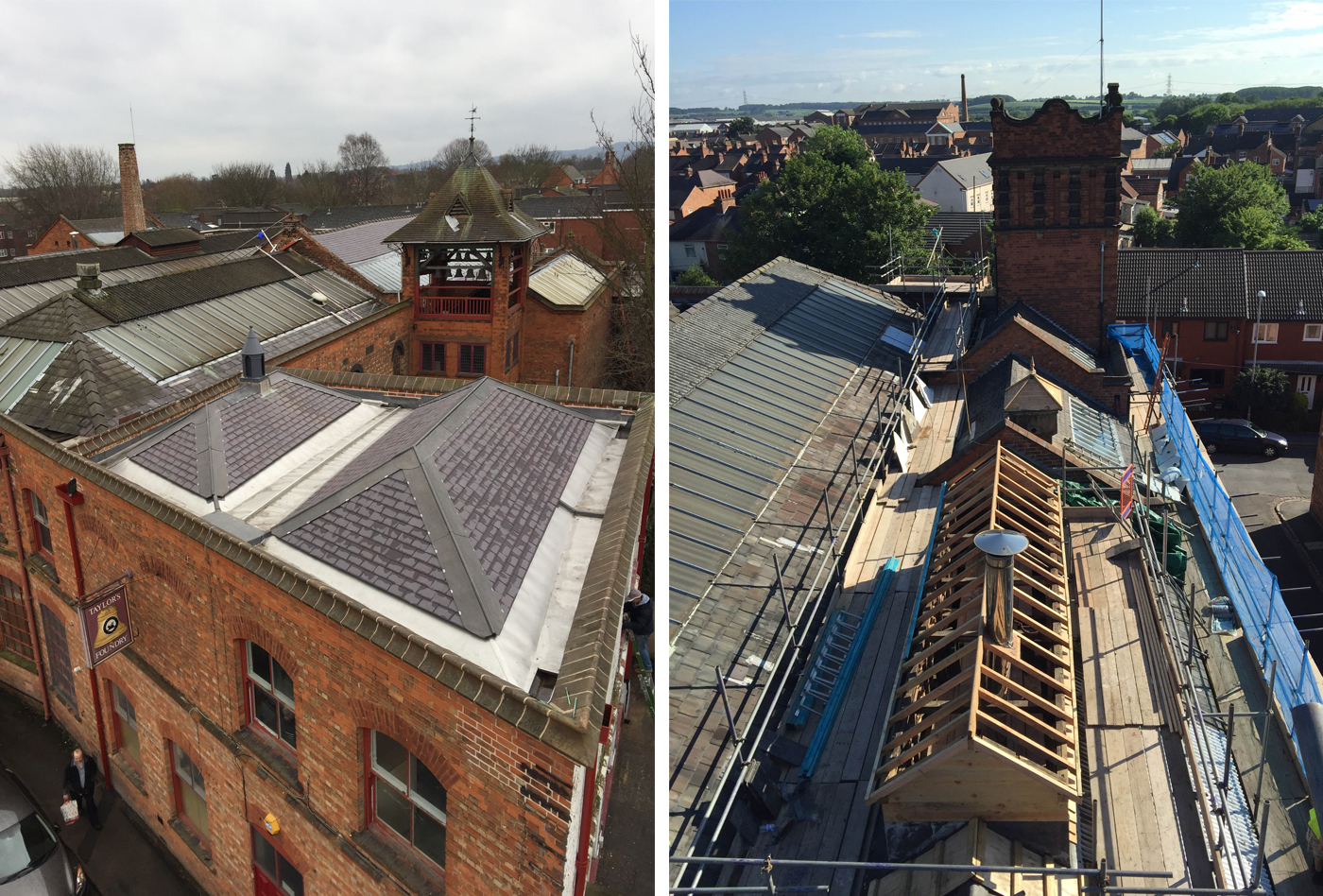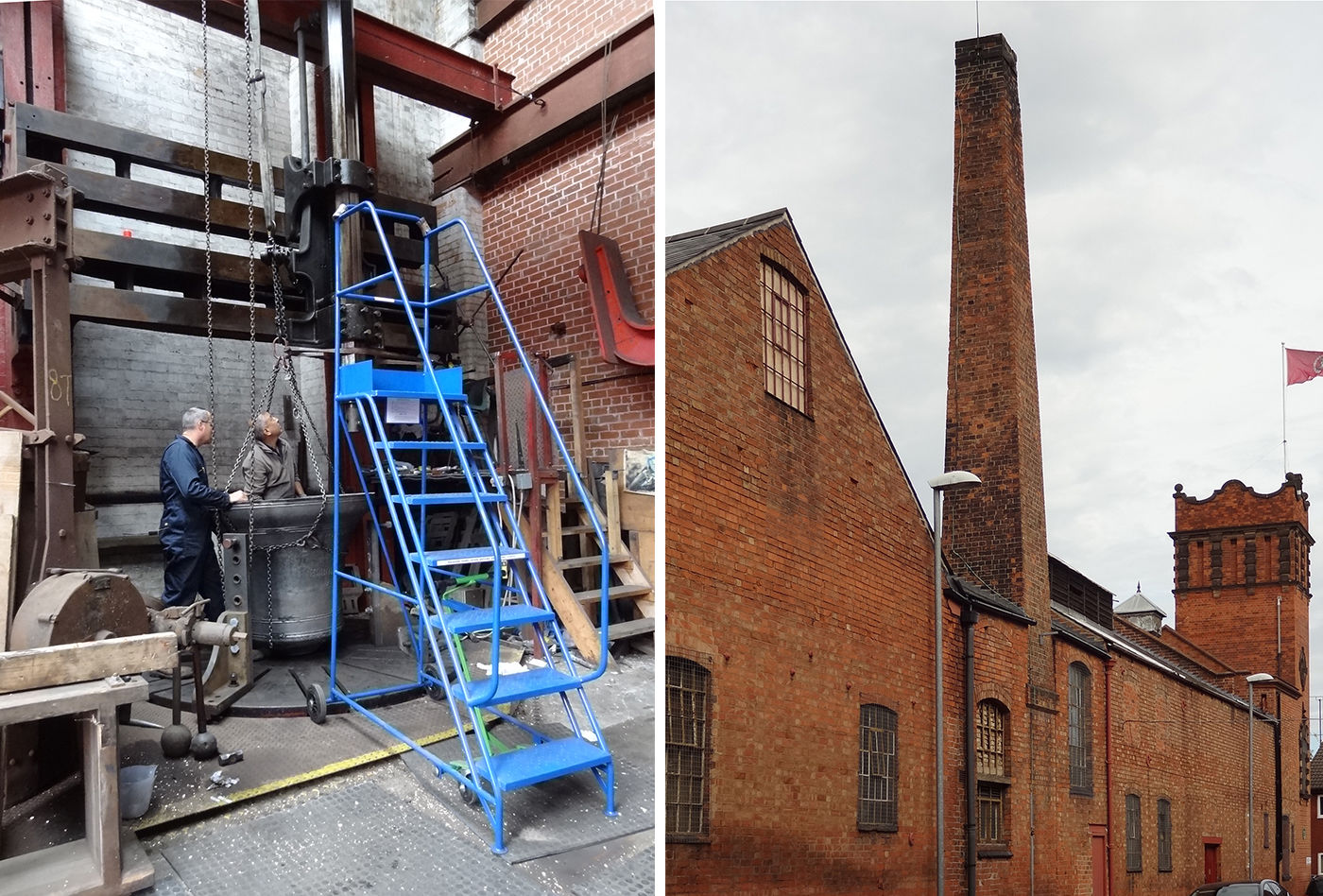The foundry operates from a series of Grade II* listed buildings, which have been on the Historic England Risk Register since 2010. The site was developed in an incremental and complex manner. We needed to understand the buildings’ history and the industrial processes that are retained within them. It was clear from an early stage, that a masterplan was needed, to restore the buildings, enhance the commercial operation, attract more visitors, increase awareness and understanding of the importance of the Taylor’s Bell foundry and enable this extra ordinary site and its unique products to survive and thrive.
Some of the roof structures are traditionally constructed in timber while others are constructed from metal girders and metal angle battens introduced as non-combustible materials, following a late 19th century fire. All roofs are covered with slate. The organic development of the site and the enclosing of an original open internal yard led to the introduction of wide cast iron valley gutters that leaked at the joints and could not be repaired without stripping the roof slopes on either side. Our urgent repair solution was to leave this historic form of construction in place and to over-line the gutters with stainless steel.
The poor condition of the complex roofs and internal cast iron valley gutters affected the building fabric and its contents, which include a wealth of unique manufacturing equipment and perishable paper archives. The urgency of repair was such that it could not be postponed until a larger masterplan project was developed and emergency grant aid was sought from Historic England. We have delivered three phases of emergency repairs in parallel with work for a larger masterplan exercise, culminating in a first round HLF bid which has been awarded for the Development Phase.
HLF funding is now secured to undertake the first stage of the restoration of the remaining buildings, provide improved public access and engagement, a national bell archive centre and enhanced museum. The current proposals include improved visitor arrival, dedicated and safe visitor route, resource facilities, a specially constructed archive, extended museum exhibition and activity space as well as enhanced Taylor Bellfoundry Industrial methods to increase productivity.
We worked with Rena Pitsilli-Graham, conservation architect, and Ingham Pinnock Associates, economic development and regeneration consultants.
